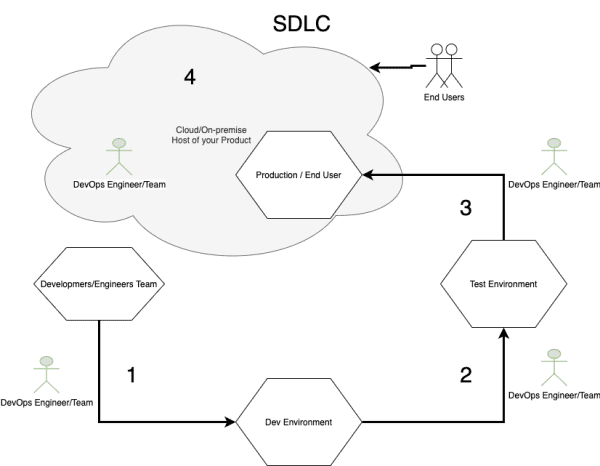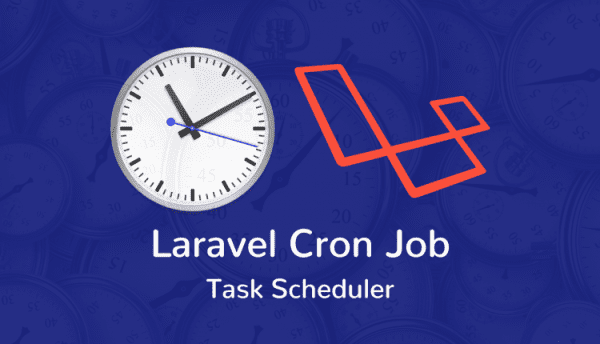First, let me start by explaining What does DevOps engineer role is, then let me explain more about the mission of DevOps within the Full Software Development Life Cycle, What Does Toolchains, Why would this role improve the efficiency of any corporation, and last, not least Where would DevOps involved in each product Continous Integration Development and Deployment CI/CD. Also, Summary and Goals.
What is DevOps or Development Operation's Engineer?
DevOps may be a set of practices that mix software development (Dev) and information-technology operations (Ops) which aims to shorten the systems development life cycle and supply continuous delivery with high software quality.
Software Development Is the process of conceiving, specifying, designing, programming, documenting, testing, and bug fixing involved in creating and maintaining applications, frameworks, or other software components.
Information-Technology Operations Is a set of all processes and services that are both provisioned by an IT staff to their internal or external clients and employed by themselves, to run themselves as a business. The term refers to the appliance of operations management to a business's technology needs.
Before the Automated process, development teams and Project Managers were usually scared of any coming releases or at least alerted for new bugs in pipelines after each release. With the CI/CD and DevOps role, operations got into more comfortable and low-stress within the time of each deployment, especially if the release would be accessed directly by the End-user profitable or none profitable products. Also, Development phases, with New Integration and development tests, development teams would have more productivity than before.
What is Toolchains that DevOps needs to be involved with?
As DevOps is meant to be a cross-functional mode of working, people who practice the methodology use different sets of tools—referred to as "toolchains"—rather than one.
What are the Key Aspects of the DevOps role?

1-Requirements and Gathering Analysis is the process of defining user expectations for a brand new software being built or modified. In software engineering, it's sometimes said loosely by names like requirements gathering or requirements capturing. Requirements and Gathering analysis encompasses those tasks that move into determining the wants or conditions to satisfy for a brand new or altered product or project, taking account of the possibly conflicting requirements of the assorted stakeholders, analyzing, documenting, validating and managing software or system requirements. Here are the objectives for performing requirement analysis within the early stage of a software project:
Which, What to How: Software engineering task bridging the gap between system requirements engineering and software design.
Keys and Views: Provides software designer with:
1- System information (static view)
2- Function (functional view)
3- Behavior (dynamic view)
4- Software Architecture: Model is translated to data, architectural, and component-level designs.
5- Iterative and Incremental Process: Expect to try and do a bit little bit of which in design during analysis and a bit of analysis during design.
2- Design and Coding is code development and review, management tools, code merging process which can depend on the development local environment. ex. Local spin up of project, Agile and Scrum.
3- Implementing and Building starts when the codes complete, educate the development teams on how the way to integrate the new code into their development processes.
4- Testing and Packaging this is the most important step, which needs the right process of the Continuous Integration CI to get in place before moving codes into production or live product. Also, it means Continuous Testing Tools that provide quick and timely feedback on business risks.
5- Releasing and Deploying is where the engineer needs to provide the release approvals, release automation the life cycle process, and how would the CI/CD deal with bugs agile and code bases. as Jenkins, Travis, CircleCI, GitLab, Bitbucket pipeline, Azure DevOps Pipeline and more for deployment purposes.
6- Monitoring and Maintaining is all about the end-user experience, using different tools and software's to make sure of the quality and performance of the end product and compare the efficiency of the final product with tracking the product in full.
Why would this role improve the efficiency of any corporation?
CSIRO and the Software Engineering Institute — suggested defining DevOps as "a set of practices intended to reduce the time between committing a change to a system and the change being placed into normal production, while ensuring high quality". So for any scale of cooperation, DevOps would reduce a lot of time between Development and final product, and this would move the product into higher demands, expectations and a better experience for the end-users.
Where would DevOps involved in each product Continous Integration Development and Deployment CI/CD

In each process, DevOps is the organizer or builder of how the Process needs to work, for example the diagram above, a Software Dev Life Cycle, the minimum of DevOps Engineer or Team, should be able to identify the process and how would the process be involved till the final product/production. However, this is not just what the DevOps needs to do, DevOps should use tools and monitor software to make sure of the final product efficiency and quality, for any reason if the last product went out with any problem, the flow should go into another phase to review where did this issue came from, and restoring the last fully functional product before this release should be easy to retrieve by different backup and restoring tools.
Summary and Goals
IT performance may be measured regarding throughput and stability. Throughput may be measured by deployment frequency and time interval for changes; stability may be measured by mean solar time to recover. The State of DevOps Reports found that investing in practices that increase these throughput and stability measures increase IT performance. The goals of DevOps span the complete delivery pipeline. They include: Improved deployment frequency;
1- Faster time to market;
2- a Lower failure rate of recent releases;
3- the Shortened time interval between fixes;
4- Faster mean solar time to recovery (in the event of a brand-new release crashing, or otherwise disabling this system).
5-Simple processes become increasingly programmable and dynamic, employing a DevOps approach.
DevOps aims to maximize the predictability, efficiency, security, and maintainability of operational processes. Very often, automation supports this objective.
This Summary and goals came from experience and knowledge not from any source, in case unclear or wrong phrases please feel free to contact me Sam Elayyoub @ [email protected] or submit a comment directly on this is Reallexi.com which I will respond to it asap.
By: Mutasem Elayyoub

.jpg)

